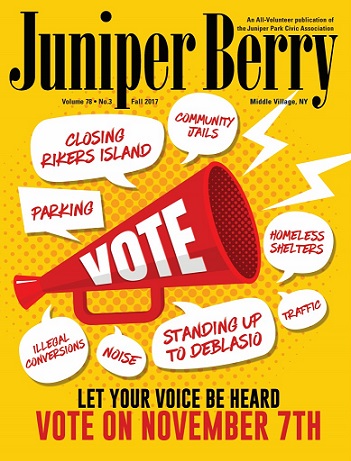A century ago, Middle Village was literally “at the end of the line”. The trolley system was being built up all over Queens, but in 1917 the Metropolitan Avenue trolley started in Brooklyn and ended at St. John Cemetery. (This in itself was an extension of the line as between 1869 and 1881 it ended at Lutheran Cemetery.) In 1907, the Brooklyn Rapid Transit Company had sought the permission of the City’s Bureau of Franchises to extend the line to Jamaica. This might have happened had the City not set the price so high.
In August 1914, Mayor William Jay Gaynor had vowed to modify the rate for the line, but then he died unexpectedly. The franchise agreement was not signed until March 1916. Work on the line began immediately.
There was a grand opening ceremony on September 26, 1917 – exactly 101 years after the opening of the Williamsburgh-Jamaica Turnpike (which later became Metropolitan Avenue). The Brooklyn Eagle described the revelry:
“There were six cars…each car had a band of music and the houses were decorated along the entire route. At Union Turnpike, someone placed blank cartridges along the route for the length of a block. The cars went through Metropolitan Avenue and thence to Fulton Street (now Jamaica Avenue) and Canal Street (now 168th Street) and returned to the starting point at Fresh Pond Road.”
After the trip was over, a reception was held at Siebs' Hotel. It was attended by Queens Borough President Maurice Connolly and the toastmaster was Rev. D.W. Peterson, pastor of Trinity Lutheran Church. As Peterson was speaking, the lights went out, forcing the gala to be held by candlelight. The Brooklyn Eagle was there for that as well:
Dr. Peterson in his opening remarks told of his first visit to Middle Village in 1871 while a student. A schoolmaster had died and the students walked all the way to Lutheran Cemetery. In 1880 he came to live in Middle Village and the horse cars were few and those badly battered vehicles. “In winter the floors of these cars were covered with straw, for we had no heat in those days. Some of the cars had kerosene lamps and the company still owes my wife for a dress which was ruined by the dripping oil.”
The presence of the trolley line led to the rapid development of the towns along the route between Jamaica and Middle Village – Forest Hills, Kew Gardens and Richmond Hill. After WWI, the greater accessibility of automotive vehicles caused ridership to decline and the trolleys were eventually replaced by buses. The bus route that follows the old trolley line today is the Q54. The buses are stored at the Fresh Pond Depot just as the trolleys were before them.



